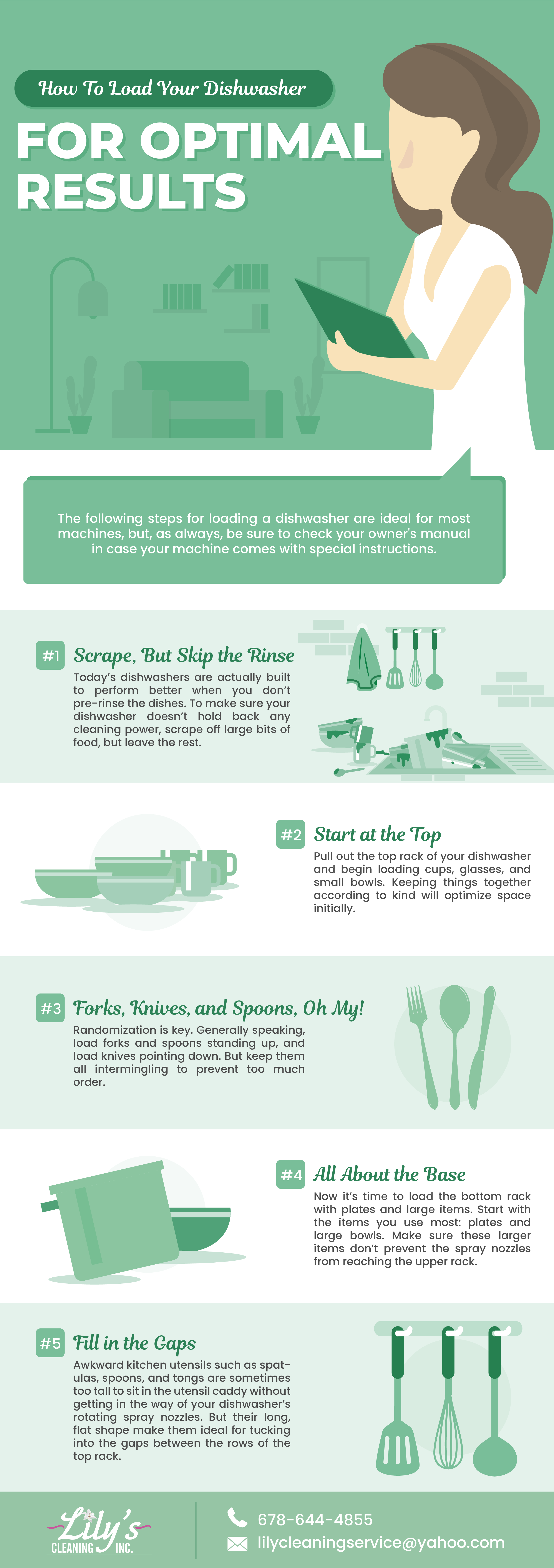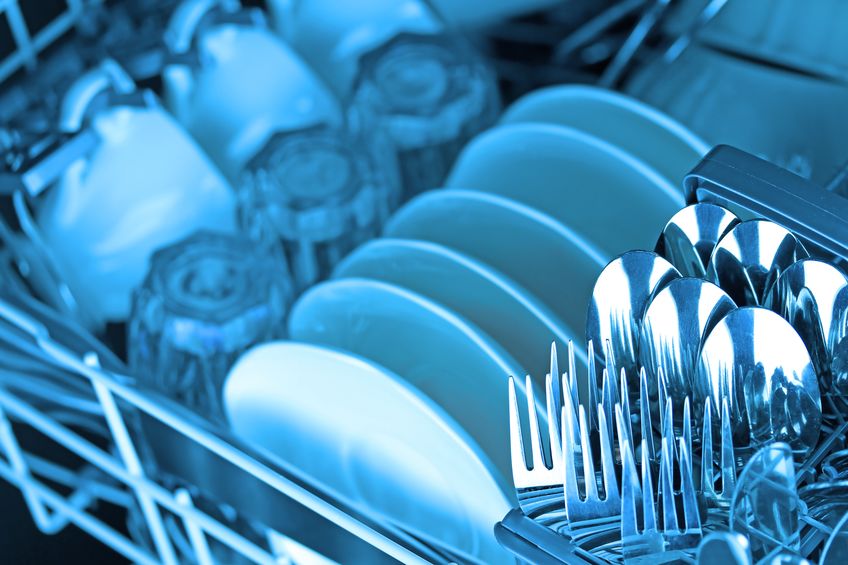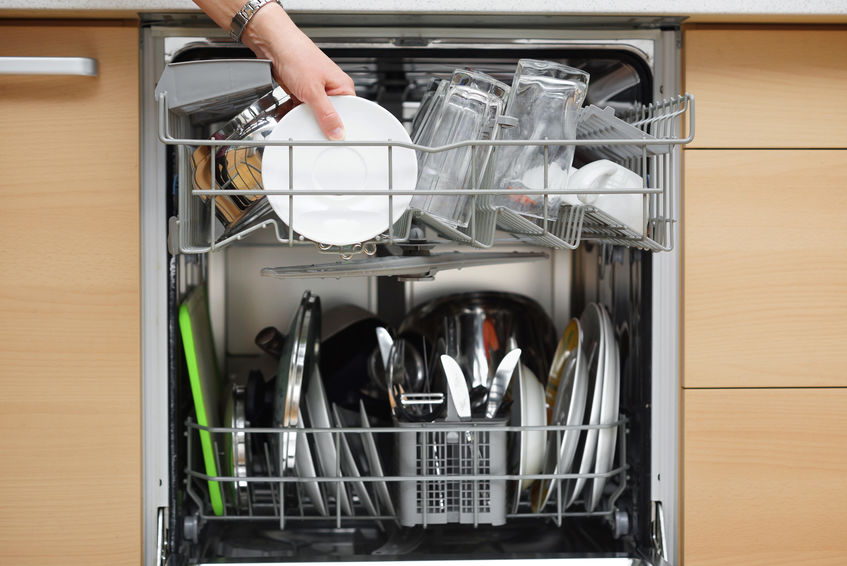Loading the dishwasher is part of nearly every household’s daily ritual. And for each household, there are at least two differing opinions on the best way to complete this seemingly straightforward task.
The great dishwasher debate is a real issue for families and roommates alike. Spouses, parents, children, and friends all bicker over what method delivers sparkling, spot-free dishes. Who could have guessed that a common kitchen appliance would foster such strong opinions?
You’re Both Right…
When discussing any divisive issue, it’s important to start from a place of common ground. In the case of the dishwasher, our shared instinct that it ought to be loaded properly for optimal results is correct.
While today’s models have come a long way from the hand-cranked wooden box originally invented by Joel Houghton in 1850, these machines function best under specific operating conditions. And the order and direction in which your dishes they are loaded is key.
…And You’re Both Partly Wrong
The next step in encouraging consensus among warring parties is to find areas where you each have room for growth. One person may posit that all of the dirty dinner plates need to face the same direction. But they don’t; That is an example of a personal preference. You may prefer the orderly and efficient method of having all dishes face one direction, but it won’t enhance the overall results.
Another person may contend that it doesn’t really matter how utensils are loaded. While it’s understandable to believe this, it’s also partly incorrect. When it comes to loading utensils, too much order can actually breed chaos.
For example, keeping all the spoons together may satisfy your desire for organization and make it easier to put away, but if they slide too close together, soap and water won’t be able to reach every surface.

Make Clean Dishes, Not War
If anything, the great dishwasher debate highlights that we all really do want the same thing: clean dishes. To achieve household harmony and dishwasher loading success, follow these five easy steps.
The following steps for loading a dishwasher are ideal for most machines, but, as always, be sure to check your owner’s manual in case your machine comes with special instructions.
Step 1: Scrape, But Skip the Rinse
Today’s dishwashers are actually built to perform better when you don’t pre-rinse the dishes. In fact, if you rinse dishes before loading them, you are more likely to find lingering bits of food and grease when you unload. This is because modern dishwashers contain sensing technology that reads how dirty the water is after the machine performs an initial rinse. If the water is relatively clean (and it will be if you pre-rinse), the dishwasher will assume the dishes only need a light cleaning.
To make sure your dishwasher doesn’t hold back any cleaning power, scrape off large bits of food, but leave the rest.
Step 2: Start at the Top
Pull out the top rack of your dishwasher and begin loading cups, glasses, and small bowls. Keeping things together according to kind will optimize space initially. It will also prevent chipping and breakages. But as the rack starts to fill up, don’t be afraid to rearrange items, swapping out items here and there to get a good, safe fit.
Remember, inefficient use of space may prevent the problems of overcrowding, but it is not without its own drawback: wasted water from running more loads than necessary.
Step 3: Forks, Knives, and Spoons, Oh My!
The utensil compartment is a free spirit’s playground and an obsessive organizer’s nightmare. In the utensil caddy of your dishwasher, it’s important to have a general vision rather than a highly detailed plan.
Randomization is key. Generally speaking, load forks and spoons standing up, and load knives pointing down. But keep them all intermingling to prevent too much order. Again, without enough space between utensils, the water won’t be able to blast every surface.
Step 4: All About the Base
Now it’s time to load the bottom rack with plates and large items. Start with the items you use most: plates and large bowls. Then arrange pots, pans, and baking sheets face down, according to their relative size and how much space you have left. Make sure these larger items don’t prevent the spray nozzles from reaching the upper rack.
Step 5: Fill in the Gaps
Awkward kitchen utensils such as spatulas, spoons, and tongs are sometimes too tall to sit in the utensil caddy without getting in the way of your dishwasher’s rotating spray nozzles. But their long, flat shape make them ideal for tucking into the gaps between the rows of the top rack.

Dishwasher Don’ts
Following the steps above will keep you from making the most common dishwasher blunders.
But when it comes to loading your dishwasher, what you don’t do can be as critical as what you do. Banish these three dishwasher loading no-no’s from your house today:
DON’T wash kitchen knives in the utensil caddy. For one, it’s dangerous. For another, the heat and chemicals will take their toll on the blade, the handle, and the knife’s overall construction.
DON’T wash wooden spoons in the dishwasher. The heat will dry out the wood and open the grain, creating little crevices for food particles, grime, and bacteria. Yuck!
DON’T wash bronze, copper, or gold-leaf china. Again, the heat and chemicals are the culprits. Your items may emerge with a heavy tarnish or unsightly residue, or delicate detailing may be washed off altogether.
DON’T skimp on detergent. Now that your dishes have been loaded with care, it’s time for the grand finale: using a high-quality dishwashing detergent. Select a top-rated brand that is proven to get dishes sparkly clean.
Keep the Peace with a Professional Cleaning Service
Hopefully this guide will help you call a truce in the dishwasher wars. But we know that household cleaning in general can become a source of tension, frustration, and stress in any home. If you could use an extra pair of hands to keep up with the demands of daily chores, let the professional staff at Lily’s Cleaning Service help out. Contact us today for a quote.


